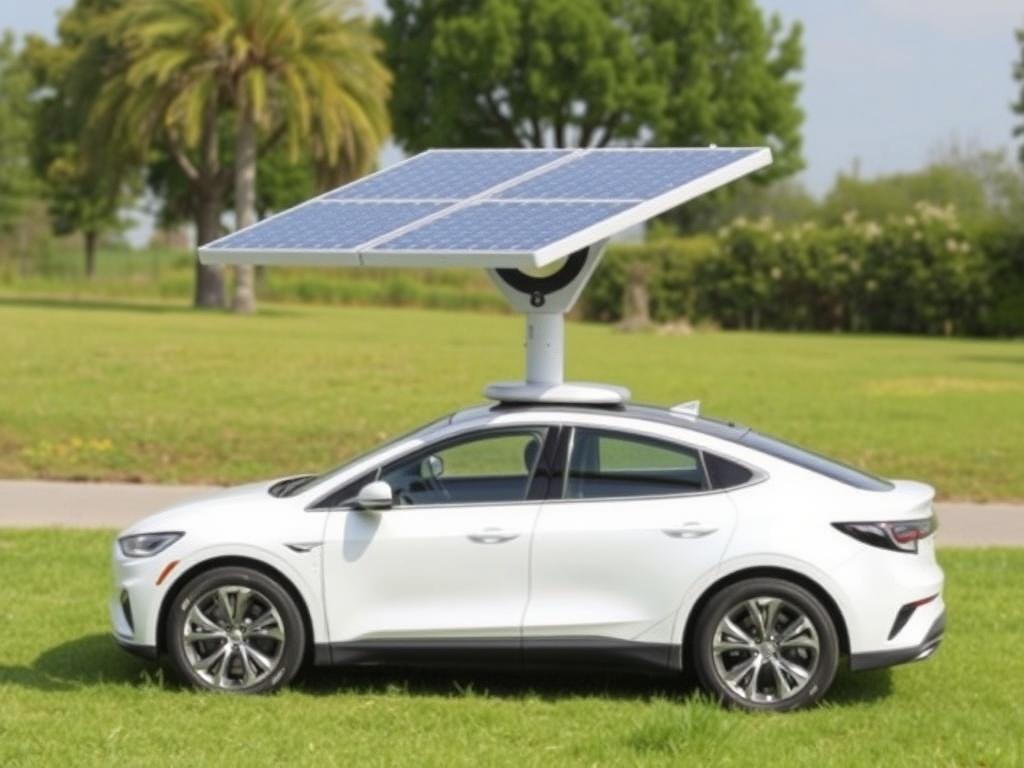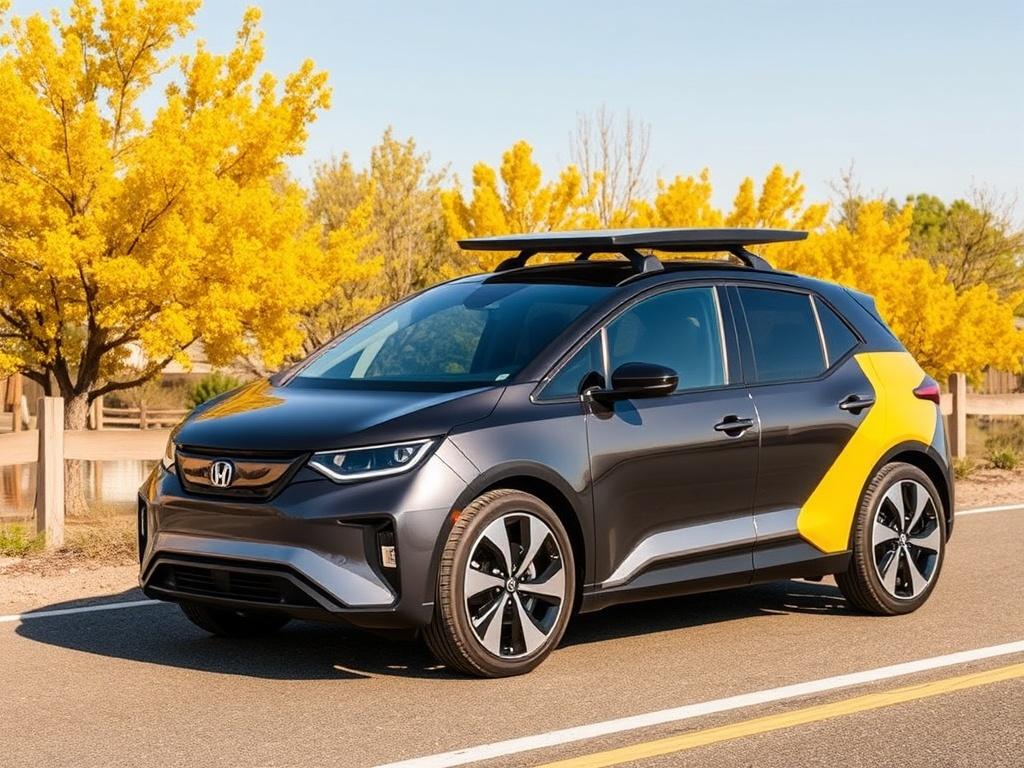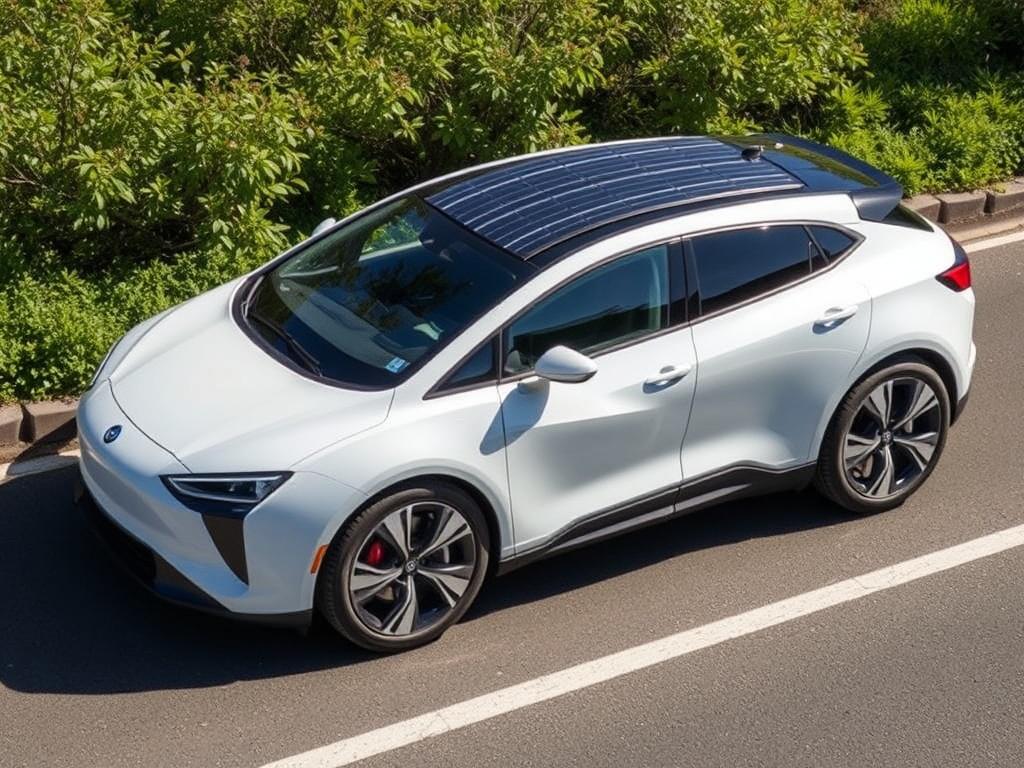- What Are Solar-Powered Vehicles?
- The Promise of Solar-Powered Vehicles
- 1. Eco-Friendly Driving
- 2. Reduced Operating Costs
- 3. Energy Independence
- 4. Innovation and Technology Advancement
- Why Aren’t Solar-Powered Vehicles Mainstream Yet?
- Limited Solar Panel Surface Area
- Energy Storage Challenges
- Cost Barriers
- Performance and Design Limitations
- Infrastructure and Market Factors
- The State of Solar-Powered Vehicles Today
- Notable Examples
- Solar-Powered Vehicle Racing
- What Needs to Change for Solar Vehicles to Go Mainstream?
- Advancements in Solar Technology
- Better Energy Storage Solutions
- Cost Reduction via Mass Production
- Infrastructure and Consumer Education
- Innovative Vehicle Design
- How Solar-Powered Vehicles Compare to Other Electric Vehicles
- Practical Tips for Those Interested in Solar-Assisted Driving
- Conclusion
Solar-powered vehicles have captured the imagination of scientists, environmentalists, and everyday drivers for decades. The idea of a car that runs solely on the energy of the sun is undeniably appealing. It promises a future where transportation is clean, sustainable, and free from the high costs and pollution associated with fossil fuels. Yet, despite impressive innovations and growing interest in renewable energy, solar-powered vehicles are still far from being mainstream. So, why aren’t cars powered by solar energy on every road today? In this article, we’ll explore the many facets of solar-powered vehicles, examining their advantages, limitations, and the various factors holding back their wider adoption.
What Are Solar-Powered Vehicles?

At its core, a solar-powered vehicle is one that uses solar panels to capture sunlight and convert it into electricity to power an electric motor. Unlike traditional electric cars that rely on electricity from the grid, these vehicles generate their energy directly from the sun, making them particularly eco-friendly. Solar energy is abundant, renewable, and clean, so vehicles that harness this power have the potential to reduce carbon emissions drastically, helping combat climate change.
There are different types of solar-powered vehicles:
- Fully Solar-Powered Vehicles: These rely entirely on solar panels integrated into the car’s surface to run without external charging.
- Solar-Assisted Electric Vehicles: These are electric vehicles (EVs), like Tesla models, that are partially powered by solar panels mounted on the roof or hood. They still need traditional charging but benefit from solar energy to extend range.
- Solar Hybrid Vehicles: In some experimental designs, solar panels supplement the energy needed to power gas or hybrid engines, reducing fuel consumption.
Currently, most commercial vehicles with solar capabilities fall into the solar-assisted category, offering incremental improvements rather than a full transition away from gasoline or grid electricity.
The Promise of Solar-Powered Vehicles
The idea of a vehicle running on sunlight sounds like a dream come true. If widely adopted, solar-powered vehicles could revolutionize transportation in several ways:
1. Eco-Friendly Driving
Solar-powered vehicles produce zero tailpipe emissions since they don’t rely on combustion engines. This means less air pollution in cities and a smaller carbon footprint on a global scale.
2. Reduced Operating Costs
Once installed, solar panels use free sunlight to generate electricity, slashing the cost of «fuel» compared to gas, diesel, or conventional electricity. Drivers could essentially charge their cars for free on sunny days.
3. Energy Independence
Solar-powered cars reduce dependence on fossil fuels and electricity grids. This is especially noteworthy in remote areas where charging stations or fuel access may be limited.
4. Innovation and Technology Advancement
Pushing solar power in transportation drives innovation in battery technology, lightweight materials, and solar cell efficiency—all critical elements for a sustainable future.
Why Aren’t Solar-Powered Vehicles Mainstream Yet?

Despite these significant advantages, solar-powered vehicles remain niche, often confined to research labs, solar car races, or early adopter communities. Let’s dig into the main obstacles preventing their mass adoption:
Limited Solar Panel Surface Area
One severe limitation is the amount of solar energy a vehicle can realistically capture. The surface area of a car is finite—generally between 2 to 6 square meters. Despite advances, solar panels have a typical efficiency of around 20-25%, meaning only a portion of sunlight hitting the car turns into usable electricity.
| Factor | Typical Value | Impact on Energy Generation |
|---|---|---|
| Solar Panel Efficiency | 20-25% | Limited conversion of sunlight to electricity reduces overall energy output |
| Car Surface Area | Approx. 3-5 m² | Restricts the number of solar cells that can be installed |
| Average Sunlight | 1000 W/m² (peak) | Varies with location, weather, and time of day |
This limited energy harvesting means a solar-powered vehicle cannot meet all the energy demands of typical driving conditions solely through onboard solar cells. For example, a full day of ideal sunlight might generate only a fraction of the electricity needed for an average car’s daily range.
Energy Storage Challenges
Another hurdle is storage. Solar power is intermittent—it depends on sunny weather and daytime hours. For nighttime driving or cloudy days, the vehicle requires a battery system capable of storing excess energy.
Current lithium-ion batteries are the most common option for electric cars but add significant weight, bulk, and cost. The balance between battery size, vehicle weight, and performance is delicate. Increasing battery capacity improves range but also increases vehicle mass, reducing efficiency. This leads to a tricky design problem.
Cost Barriers
The cost of integrating high-efficiency solar panels and the necessary battery systems into vehicles is still relatively high. Manufacturers also face the challenge of making solar power integration cost-competitive with traditional EV battery packs or internal combustion engines.
While solar panels themselves have become cheaper over the past decade, the specialized, lightweight, and durable materials required for automotive use drive prices up. Additionally, economies of scale have not yet been achieved because solar-powered vehicles are not mass-produced.
Performance and Design Limitations
Solar cars often prioritize function over form—they tend to have flat, smooth surfaces optimized for maximum sun exposure rather than aerodynamic styling or spacious interiors. This limits consumer appeal, especially when most buyers want SUVs, sedans, or trucks with ample room and comfort.
Moreover, even the best solar-powered vehicles today can’t match the speed and acceleration of traditional cars, which can be a big deterrent for everyday drivers.
Infrastructure and Market Factors
The automotive market is heavily influenced by existing fuel infrastructure, electric charging networks, and consumer habits. For solar-powered cars to become widespread, they must compete with these established systems.
Governments and companies have invested billions into gasoline stations and electric charging points, creating convenience and reliability expectations. Solar cars, which require sunlight and cannot rely completely on grid charging, currently lack similar infrastructure support.
The State of Solar-Powered Vehicles Today
Although not mainstream yet, solar-powered vehicles are far from theoretical. Several companies and research teams have built prototypes, and a niche market of solar-assisted electric vehicles is growing.
Notable Examples
- Lightyear One: A solar-assisted electric car designed with integrated solar panels that add up to 70 miles of range per day in ideal conditions. It exemplifies current solar hybrid technology.
- Stella Lux: A family solar car developed by students at Eindhoven University. It combines solar power and efficient batteries to drive everyday distances.
- Aptera Motors: Their upcoming three-wheeled vehicle promises up to 1000 miles of range, partly thanks to solar panels on its lightweight frame. It’s targeting early adopters interested in solar-powered mobility.
Solar-Powered Vehicle Racing
Solar car races like the World Solar Challenge in Australia push the boundaries of solar vehicle technology. Teams from universities worldwide design ultra-efficient cars that compete over thousands of kilometers powered only by sunlight.
Though these race cars are not practical consumer vehicles, they serve as testbeds for advanced solar cells, lightweight materials, and energy-efficient designs, pushing innovation forward.
What Needs to Change for Solar Vehicles to Go Mainstream?

For solar-powered vehicles to proliferate beyond niche markets, several key developments are essential.
Advancements in Solar Technology
Solar panel efficiency must improve significantly, ideally surpassing 30-40%, with flexible, lightweight panels that can be seamlessly integrated into vehicle bodies without impacting design. Breakthroughs in perovskite solar cells or tandem cells show promise but need commercial scaling.
Better Energy Storage Solutions
Battery technology must evolve to offer higher energy density without excessive weight or cost penalties. Innovations like solid-state batteries, supercapacitors, or hybrid storage systems may unlock solar vehicles’ potential to store and use solar energy more effectively.
Cost Reduction via Mass Production
As solar-powered vehicles enter mass production, costs will come down through economies of scale. Partnerships between automakers, solar companies, and governments can accelerate this process.
Infrastructure and Consumer Education
Wider awareness about the benefits of solar vehicles and updated energy infrastructure can boost adoption. Homes with solar panels, grid integration for surplus car-generated energy, and incentives for solar-assisted vehicles can create a more favorable market ecosystem.
Innovative Vehicle Design
Future designs must balance solar optimization with consumer preferences for style, comfort, and utility. Modular solar panels, retractable systems, or flexible solar skins could integrate better with varied vehicle types from sedans to SUVs.
How Solar-Powered Vehicles Compare to Other Electric Vehicles
One common question is how solar-powered vehicles stack up against traditional electric vehicles charged from the grid.
| Aspect | Solar-Powered Vehicles | Electric Vehicles (Grid-Charged) |
|---|---|---|
| Energy Source | Sunlight (directly via panels on vehicle) | Electric grid (varied generation mix) |
| Range | Limited by sunlight and battery; typically shorter without external charging | Can be significantly higher with large battery packs and widespread chargers |
| Charging Convenience | Self-charging in sunlight; limited on cloudy days or nights | Flexible with fast chargers, home chargers; no weather dependency |
| Environmental Impact | Low to zero emissions and highly sustainable if solar is primary | Depends on grid source; cleaner with renewable-heavy grids |
| Cost | Currently higher due to specialized solar tech and lower volume | More affordable with mass production and improving battery tech |
Practical Tips for Those Interested in Solar-Assisted Driving
While fully solar-powered vehicles may be rare, interested drivers can still benefit from solar technologies with some practical approaches:
- Solar Roof Panels for EVs: Some models like the Hyundai Sonata Hybrid or Lightyear One offer solar roof options to extend battery range slightly during sunny days.
- Home Solar Charging: Installing solar panels on your home and charging your electric vehicle with this energy reduces carbon footprint and electricity bills.
- Energy-Efficient Driving: Combining solar assistance with smart routing, regenerative braking, and optimized driving habits maximizes your car’s total efficiency.
Conclusion
Solar-powered vehicles remain a fascinating and promising solution for sustainable transportation, but several significant hurdles stand between today’s models and widespread adoption. Limited solar panel surface area, energy storage challenges, high costs, and design compromises all play a role in keeping solar cars off most roads. However, ongoing advances in solar technology, batteries, and vehicle design, combined with growing demand for clean alternatives, suggest a bright future for solar-assisted and eventually fully solar-powered vehicles. As these technologies mature and integration improves, solar-powered driving could become a common, practical, and exciting way to reduce our carbon footprint and embrace renewable energy on an everyday basis. Until then, the journey toward mainstream solar vehicles continues, fueled by innovation, passion, and the unstoppable power of the sun.
Как вам статья?








Крутая тема. Я как-то каталась на машинке с солнечными панелями по даче — короткие маршруты норм держит, но для дальняков маловато. Если вложить в батареи и зарядную сеть, солнечный транспорт реально может зайти по-взрослому.